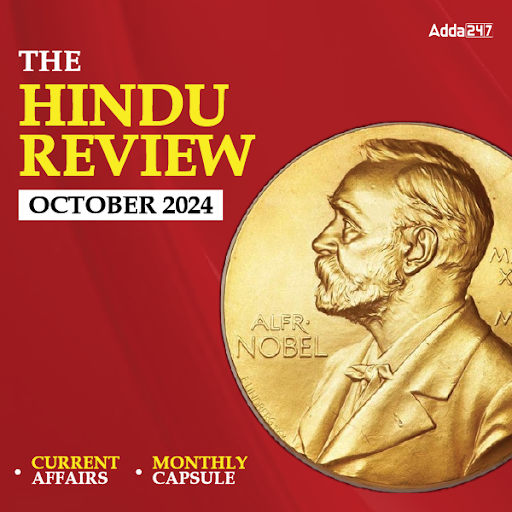Dear Students, English Section is a topic quite dreaded by candidates taking the bank exams. Though the sheer number of concepts and rules may seem intimidating at first, with discipline and the right approach, it is not difficult to master these concepts and their application to questions. Through such quizzes, we will provide you all types of high-level questions to ace the Sentence Improvement, new pattern English section of bank exams. In this quiz, you can practice reading comprehension and out of the context sentence questions For IBPS PO 2017.
Directions (1-10): Read the following passage carefully and answer these questions. Certain phrases have been printed in bold to help you locate them while answering some of the questions.
The goods and services tax (GST) is finally here, so perhaps now that the time is to reflect on how the budget can be updated for a post-GST India. Just as the GST aims to create national uniformity in taxation, rethinking budgets can also push efficiency. A bold step the government can take to do away with narrow ministerial distinctions when schemes or programmes have intersecting stakeholders and benefits. Instead of top-down, government spending could be rethought bottom-up. In fact, one could even allow ministries to compete for budgetary support if the ultimate service or benefit is similar or the same.
Many activities are linked. Swachh Bharat Abhiyan isn’t just about sanitation or the environment; it has an immediate impact on healthcare, especially via water and sanitation. So the budget for sanitation should factor in this benefit, maybe drawing some funds from the health ministry. Food directly gets a lot of subsidies, and there existed another supporting mechanisms like fertilizer subsidy. In addition, the bulk of subsidies or losses in the power sector are due to agriculture. If India loses one rupee per kilowatt-hour (kWh) of power on average, a big chunk of the total projected Rs800 billion annual losses is due to agriculture, plus a measurable fraction of state subsidies for agricultural power supply.
One useful tool for thinking on such issues is the service being provided instead of the physical transaction. Consider lighting. It’s ostensibly provided by electricity, but when there is no grid, we end up with the use of kerosene. Lots of it. As per petroleum planning and analysis cell (PPAC) data, the under-recovery of money by oil companies on account of kerosene was over Rs100 billion in 2015-16. The downsides of using so much kerosene range from foreign exchange usage (imported oil) to indoor air pollution, risks of children ingesting kerosene, and even the creation of the diesel mafia for adulteration.
As per rural surveys a few years ago, over 80% of rural homes used kerosene for lighting, either as primary or back-up fuel (though the number is declining). This was a cost of tens of rupees per home, excluding the under-recovery, if not subsidy, on the supply side. Instead, if we were to use the grid to provide the same level of lighting as a kerosene lamp (rather, much better, using modern LEDs), the energy cost would be an order of magnitude cheaper. What this suggests is that we rapidly need to electrify not just every village but every household, and also ensure there is quality of supply, especially in the evenings. Utilities are unable to do this in many parts of India, especially for non-remunerative customers.
Doing some back-of-the-envelope estimation, the petroleum subsidy was given as “only” Rs250 billion per year, having fallen owing to low global oil prices. Some of this was for domestic LPG subsidies. We should actually combine subsidies with under-recovery by oil marketing companies to understand the true picture. But even without getting into details, we know there is likely Rs100 billion worth of non-consumer money on the table if we end kerosene use for lighting, if not much more. If we assume there are 100 million homes either without electricity or with very poor electricity supply, shifting this amount to the power sector, we get Rs1,000 per home per year. This could easily fund a smart meter, which can guarantee lifeline supply, or start with providing gap funding for extending electrification. As the finance minister touted, a number of districts are now kerosene free—we can do the same across India with innovative rethinking of budgets.
Q1. Why are there losses in the power sector?
A. Due to fertilizer subsidy
B. Due to agriculture
C. Due to downsides of kerosene
(a) Only A
(b) Only B
(c) A and B
(d) B and C
(e) A, B and C
Q2. What are the drawbacks of using much of kerosene?
A. Losses in the power sector
B. Risk of children ingesting kerosene
C. Creation of diesel mafia for adulteration
(a) Only A
(b) Only B
(c) A and B
(d) B and C
(e) A, B and C
Q3. What can help to lessen the amount of energy cost in rural areas?
(a) Petroleum planning and analysis
(b) Foreign exchange usage
(c) Conducting rural surveys
(d) Use of modern LEDs
(e) None of these
Q4. What is the objective of GST, as stated in the given passage?
(a) to compete for budgetary support
(b) to rethink budget
(c) to push efficiency of the country
(d) to create national uniformity in taxation
(e) None of these
Q5. How can we make districts across India kerosene free?
A. With innovative rethinking of budgets
B. Electrifying every household
C. Ensuring there is a quality of supply
(a) Only A
(b) Only B
(c) A and B
(d) B and C
(e) A, B and C
Q6. Which of the following phrases would replace the phrase given in bold-
having fallen owing to
(a) have fallen owing to
(b) have fallen owing
(c) having fallen owing
(d) had fell owing to
(e) No correction
Q7. Which of the following phrases would replace the phrase given in bold-
to do away with
(a) that doing away with
(b)is doing away with
(c) in doing away with
(d) as to doing away
(e) No correction
Q8. Which of the following phrases would replace the phrase given in bold-
that the time is to reflect on
(a) it’s the time to reflect
(b) that the time is to reflect
(c) if it is the time to reflect on
(d) is the time to reflect on
(e) No correction
Q9. Which of the following phrases would replace the phrase given in bold-
and there existed another supporting mechanisms
(a) and there exist other support mechanism
(b) or there exists another supporting mechanism
(c) also there existed another supporting mechanism
(d) but there exist other support mechanisms
(e) No correction
Q10. Which of the following phrases would replace the phrase given in bold-
and also ensure there is
(a) but aso ensure there are
(b) but also ensure there is
(c) and also ensure there will be
(d) but allso ensure there will be
(e) No correction
Directions (11-15): A part of the sentence is bold. Below are given alternatives to the bold part as a, b, c and d which may improve the sentence. Choose the correct alternative. In case no improvement is needed, your answer is ‘e’.
Q11. During the recession many companies will be forced to lay off workers.
(a) have the force to
(b) be forced into
(c) forcibly have
(d) force to
(e) No improvement
Q12. He wanted nothing else expecting to sleep after a stressful day at work.
(a) nothing better than
(b) anything else unless
(c) nothing but having
(d) nothing good than
(e) No improvement
Q13. Ramesh took charge of the project, within a few days of having appointed?
(a) having an appointment
(b) being appointed
(c) after being appointed
(d) after appointing
(e) No improvement
Q14. It is difficult to work with him because he is one of those persons who think he is always right.
(a) think they are always
(b) always thinks he is
(c) is always thinking they are
(d) thought he is always
(e) No improvement
Q15. Foreign businesses in developing countries have usually problems with lack of infrastructure and rigid laws.
(a) usual problems as
(b) usually problems on
(c) the usual problems of
(d) usually a problem in
(e) No improvement
You May Also Like to Read:




 The Hindu Review October 2022: Download ...
The Hindu Review October 2022: Download ...
 Good News, IBPS Clerk Vacancies Increase...
Good News, IBPS Clerk Vacancies Increase...
 IBPS PO Vacancies Increased Upto 5973
IBPS PO Vacancies Increased Upto 5973




